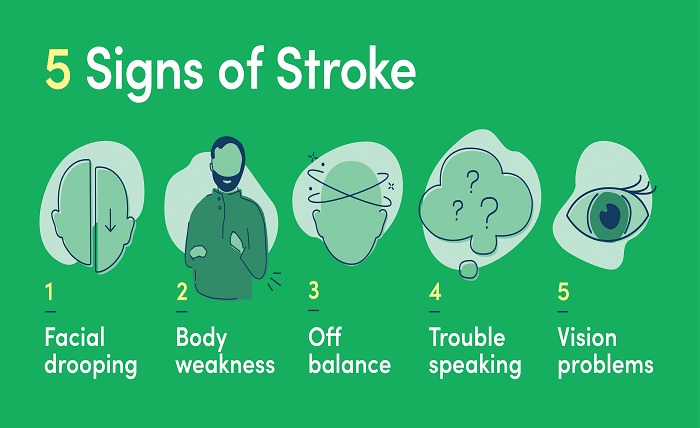Identifying and Understanding the Symptoms of Various Stroke Types

Key Takeaways:
- A stroke occurs when the blood flow to the brain is disrupted, causing damage to brain cells.
- There are different types of strokes, including ischemic, hemorrhagic, and transient ischemic attack (TIA).
- Recognizing the symptoms of a stroke is crucial for seeking immediate medical help. Use the acronym FAST: Face, Arms, Speech, and Time.
- Unusual symptoms of a stroke can include confusion, loss of balance and coordination, and vision problems.
- Early intervention and treatment are essential in minimizing damage to the brain and preventing complications.
- If you suspect a stroke, call emergency services and seek immediate medical evaluation.
- Treatment options may vary depending on the type and severity of the stroke. Rehabilitation is crucial for recovery and improving functionality.
Understanding the Different Types of Strokes
A stroke occurs when the blood flow to the brain is disrupted, leading to damage to brain cells. There are different types of strokes, each categorized based on the cause and effects on the brain. By understanding the different types, you can recognize the symptoms and seek appropriate medical help promptly.
Ischemic Stroke
Ischemic strokes are the most common type, accounting for about 87% of all strokes. They occur when a blood clot or plaque buildup blocks or narrows a blood vessel supplying blood to the brain. The reduced blood flow deprives the brain of essential oxygen and nutrients, leading to brain cell damage or death.
Some of the risk factors associated with ischemic stroke include high blood pressure, smoking, diabetes, high cholesterol, obesity, and a sedentary lifestyle. Recognizing the symptoms of an ischemic stroke is crucial for early intervention and treatment.
Hemorrhagic Stroke
Hemorrhagic strokes occur when a blood vessel in the brain ruptures, leading to bleeding within or around the brain. This rupture can be caused by conditions such as high blood pressure, aneurysms, or arteriovenous malformations (AVMs).
Unlike ischemic strokes where a clot blocks the blood vessels, hemorrhagic strokes cause bleeding and increased pressure on the brain, leading to damage. The risk factors for hemorrhagic stroke include high blood pressure, smoking, excessive alcohol consumption, drug abuse, and certain medical conditions.
Transient Ischemic Attack (TIA)
A transient ischemic attack (TIA), often referred to as a “mini-stroke,” is a temporary and reversible episode of stroke-like symptoms. TIAs are caused by a temporary disruption of blood flow to the brain and typically last for a few minutes to a few hours.
Although TIAs do not cause permanent brain damage, they should not be ignored. TIAs are often a warning sign of an impending full-blown stroke and should be taken as a serious medical emergency. Prompt medical attention can help prevent a stroke from occurring.
Recognizing Common Symptoms of a Stroke
Recognizing the symptoms of a stroke is vital for seeking immediate medical help. Remember the acronym FAST – it stands for Face, Arms, Speech, and Time:
Sudden Weakness or Numbness
One of the common signs of a stroke is sudden weakness or numbness in the face, arm, or leg, typically on one side of the body. You may notice drooping or numbness in the facial muscles, difficulty holding objects or weakness in your arm, or dragging of your leg while walking. These symptoms may manifest abruptly without any known cause.
Loss of Speech or Difficulty Speaking
Another telltale sign of a stroke is difficulty speaking or understanding others. You may experience slurred speech, find it challenging to form words or sentences, or have trouble comprehending what others are saying. This communication difficulty can occur suddenly and is a cause for concern.
Severe Headache and Dizziness
A sudden, severe headache without a known cause is a warning sign of a stroke. The headache may be accompanied by dizziness, loss of balance, or difficulty walking. These symptoms can be particularly alarming, especially if they occur suddenly and are not associated with any other known cause.
Unusual Symptoms: How to Spot Atypical Signs of a Stroke
In addition to the common symptoms, strokes can also present with unusual signs that may not be typically associated with the condition. Being aware of these atypical symptoms can help in identifying a stroke and seeking medical attention promptly.
Confusion or Disorientation
Some strokes can lead to confusion, disorientation, or a sudden change in mental state. You or someone experiencing a stroke may find it challenging to understand their surroundings, have difficulty remembering details, or become disoriented. These cognitive changes can occur alongside other stroke symptoms.
Loss of Balance and Coordination
Loss of balance or coordination can be a sign of a stroke. You may suddenly have difficulty walking, experience a lack of coordination or balance, or even feel dizzy or lightheaded. These symptoms, when combined with other stroke signs, should not be ignored and warrant immediate medical attention.
Vision Problems
Strokes can also affect your vision. You may experience sudden blurred or double vision, have trouble seeing in one or both eyes, or have a loss of vision in certain areas. These changes in vision can occur suddenly and should be considered warning signs of a stroke.
Understanding the Importance of Early Intervention and Treatment
Upon recognizing the symptoms of a stroke, it is crucial to seek immediate medical help. Time is of the essence when it comes to stroke, as early intervention and treatment can minimize damage to the brain and prevent potential complications.
Calling Emergency Services
If you suspect you or someone around you is experiencing a stroke, do not hesitate to call emergency services. In many cases, calling for an ambulance is the fastest way to get the necessary medical attention. Emergency medical professionals can provide critical care on the way to the hospital and ensure timely treatment upon arrival.
Immediate Medical Evaluation
Upon arriving at the hospital, healthcare professionals will conduct a thorough evaluation to confirm the presence of a stroke and determine the type of stroke. This evaluation may include physical examinations, imaging tests such as CT scans or MRIs, and blood tests. The results of these evaluations will guide the treatment plan.
Treatment Options and Rehabilitation
Treatment options for stroke may vary depending on the type and severity of the stroke. Ischemic strokes may require medication or medical procedures to dissolve or remove blood clots. Hemorrhagic strokes may require surgery to repair or remove the affected blood vessels. Following the initial treatment, rehabilitation plays a crucial role in helping individuals regain their functionality and independence.
Rehabilitation may include physical therapy, speech therapy, occupational therapy, and cognitive therapy, tailored to meet the individual’s specific needs. The goal of rehabilitation is to facilitate recovery, improve mobility and coordination, and enhance overall quality of life after a stroke.
Remember, every minute counts when it comes to stroke. Recognizing the symptoms and seeking immediate medical help can significantly improve the chances of a positive outcome and minimize potential complications. Be proactive in understanding the different types of strokes and their symptoms to ensure prompt action when needed. Stay informed, spread awareness, and take care of your brain health.




